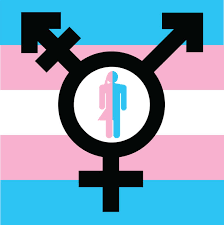In today’s world, conversations surrounding gender identity are more important than ever. As our understanding of gender evolves, so does the language we use to describe it. Gender identity is a complex and deeply personal aspect of who we are, influencing not just individual lives but also our cultures and communities. This article aims to unravel the meaning of gender identity and its significance in contemporary society, while also clarifying some common misconceptions and terms associated with this multifaceted topic.
What Is Gender Identity and Why It Matters Today
Gender identity refers to an individual’s deeply felt sense of their gender, which may be male, female, a blend of both, neither, or something entirely different. It’s how people perceive themselves and what they call themselves. This identity can align with the sex assigned at birth, or it might not. Understanding gender identity is crucial for fostering respect and inclusion in a society that is increasingly recognizing the diversity of human experience. Mtf Hormones Breast DevelopmentTransgender Girl
In recent years, awareness and acceptance of different gender identities have grown significantly. This shift is vital for creating safe and supportive environments where individuals can express themselves authentically. When society acknowledges and respects diverse gender identities, it fosters a culture of understanding that helps reduce discrimination and marginalization.
Understanding Gender Identity: A Quick Overview
At its core, gender identity is about self-identification. It encompasses a range of identities that exist along the gender spectrum, including but not limited to cisgender (where one’s gender identity matches the sex assigned at birth), transgender (where it does not), non-binary, genderqueer, and more. This spectrum acknowledges that gender is not a simple binary of male and female but rather a rich and varied landscape of identities.
Understanding gender identity also involves recognizing the distinction between biological sex (the physical attributes like chromosomes and anatomy) and gender identity. While biological sex is typically assigned at birth, gender identity is a personal, internal experience that can change over time, illustrating the complexity of human identity.
The Difference Between Gender Identity and Gender Expression
While gender identity refers to how individuals see themselves, gender expression encompasses how they outwardly present their gender to the world. This can include clothing, hairstyle, voice, and mannerisms. For instance, a person might identify as a woman but choose to express their gender in ways that are traditionally considered masculine. Similarly, someone who identifies as non-binary might use a mix of gender expressions that reflect their unique identity.
It’s essential to understand that gender expression and gender identity are not always aligned. Someone’s gender expression can shift based on context, comfort level, and personal choice. Recognizing this difference can help promote acceptance and support for individuals as they navigate their unique journeys through gender identity and expression.
Common Misconceptions About Gender Identity Explained
One of the most common misconceptions about gender identity is that it is a choice. In reality, gender identity is an intrinsic aspect of a person, much like sexual orientation. Individuals typically do not choose their identity but rather discover and embrace it over time. This misunderstanding can lead to stigma and discrimination against those who identify outside traditional gender norms.
Another misconception is that gender identity is solely a modern phenomenon. While the language and visibility of gender diverse identities have evolved, many cultures throughout history have recognized varying gender identities. For instance, Indigenous cultures in North America have long acknowledged Two-Spirit people, who embody both masculine and feminine traits. This historical context highlights that gender diversity is not a new concept but a long-standing aspect of human society.
How Gender Identity Develops Over Time for Individuals
Gender identity is often understood as a lifelong journey. For many, it begins to form in childhood as individuals start to recognize their feelings about gender. Children may express their gender identity through play, preferences for clothing, and social interactions. However, for some, the realization and acceptance of their gender identity can take years, or even decades, due to societal pressures or personal struggles.
As individuals grow, their understanding and expression of their gender can evolve. Some may find comfort in identifying with specific labels, while others may prefer not to label themselves at all. This evolution reflects the fluid nature of gender identity, allowing individuals the space to explore and affirm their true selves over time.
The Role of Society in Shaping Gender Identity
Society plays a significant role in shaping our perceptions of gender identity. From a young age, individuals are often exposed to societal norms and expectations regarding gender roles. These norms can influence how people understand their own identities and the identities of others. For instance, children might be taught to conform to traditional gender roles, which can stifle self-exploration and acceptance.
Additionally, media representation and cultural narratives heavily influence how gender identities are perceived. Positive representation of diverse identities in film, television, and literature can help validate and normalize various gender experiences. Conversely, negative stereotypes and assumptions can perpetuate discrimination and misunderstanding, highlighting the importance of societal support in fostering healthy conversations about gender identity.
Exploring Gender Identity: Terms You Should Know
To navigate discussions about gender identity effectively, it’s helpful to familiarize oneself with relevant terms. For example, "cisgender" refers to individuals whose gender identity aligns with their sex assigned at birth, while "transgender" describes those whose gender identity does not. Other terms include "non-binary," which encompasses identities that don’t fit strictly within the male/female binary, and "genderfluid," describing a gender identity that may change over time.
Understanding these terms is essential for respectful communication and support. Just as language evolves, so do our understandings of gender. Staying informed helps foster an inclusive environment where everyone feels seen and respected in their gender identities.
Supporting Others: Respecting Gender Identity Choices
Respecting someone’s gender identity is a fundamental aspect of supporting them. This can start with simple gestures, like using the correct pronouns and names that align with their identity. If you’re unsure about what pronouns to use, it’s perfectly acceptable to ask politely. This shows respect and a willingness to understand, which can greatly impact someone’s sense of belonging and acceptance.
Beyond language, supporting individuals in their gender identity involves advocating for their rights and visibility in society. This can mean standing against discrimination, promoting inclusive policies, or simply being a supportive friend or ally. Everyone deserves the right to express their gender identity freely and authentically, and your support can make a world of difference.
Navigating the complexities of gender identity is an essential part of fostering a more inclusive and understanding society. By recognizing the significance of gender identity, understanding the differences between identity and expression, and addressing misconceptions, we can create a culture of respect and support. Whether you’re exploring your own identity or seeking to support others, remember that every journey is unique. Embrace the diversity of gender identities, and join the conversation that shapes a more accepting world for everyone.


